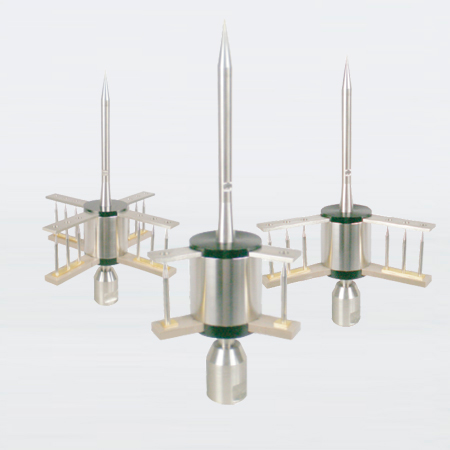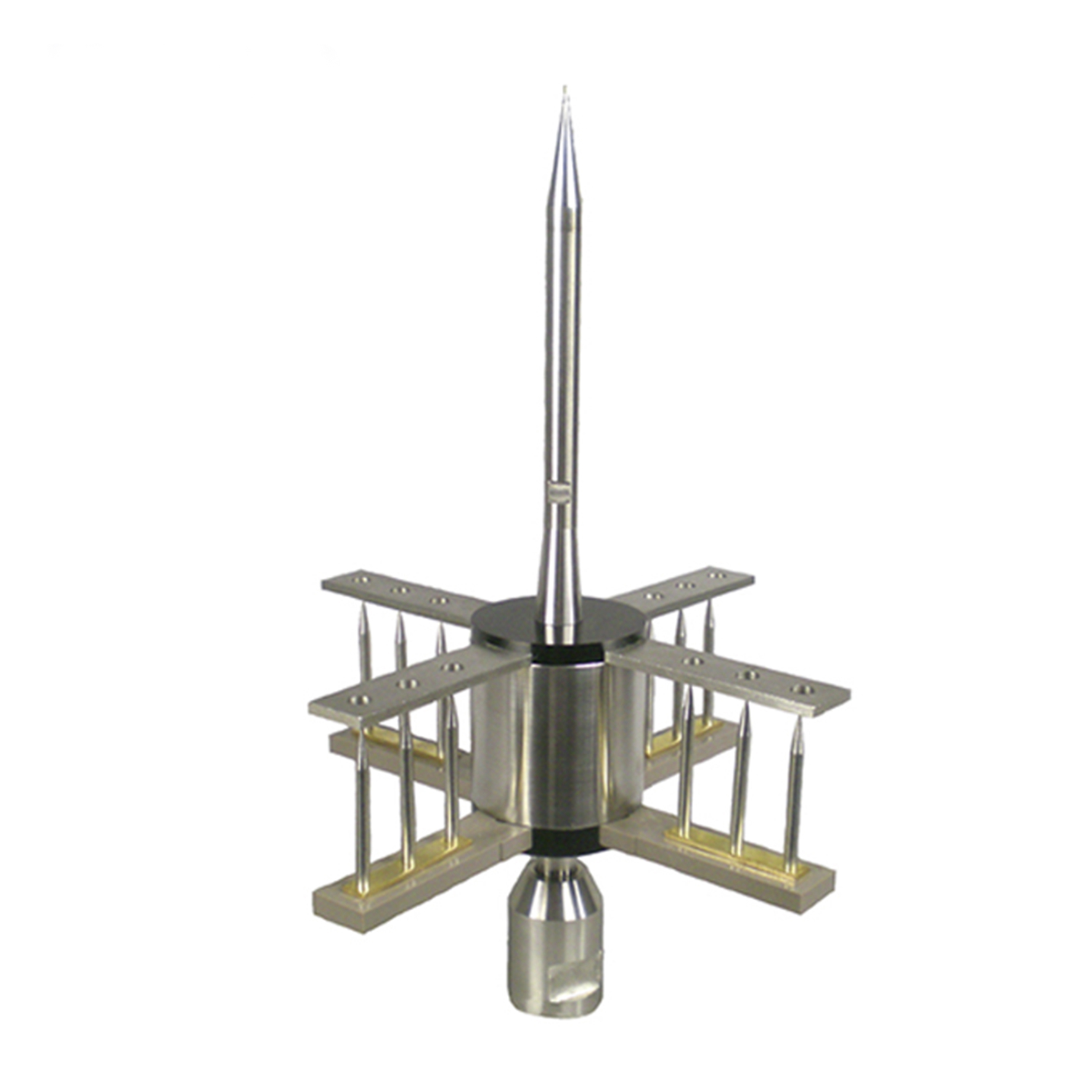A lightning rod has the ability to act as a low impedance path for lightning to take a safe route into the ground without causing damage. If, for instance, a lightning rod melts in the case of a strike, then it would not effectively protect. In brief, the reason a lightning rod does not melt involves several physical and engineering factors such as the transient nature of lightning, material high-temperature resistance, distribution of currents, heat dissipation, and the capability of grounding of the lightning protection system. More detailed and quantified data will be provided herein.
Characteristics and Role of Lightning Rods
Lightning is a high-energy discharge phenomenon, characterized by extreme voltage, current, and temperature. Specific data are as follows:
-
Lightning current: Typically 30,000 A ~ 200,000 A, with an average of 50,000 A (Source: NOAA – National Oceanic and Atmospheric Administration).
-
Lightning voltage: A typical cloud-to-ground lightning strike carries approximately 100 MV (100 million volts), with extreme cases exceeding 1 GV (1 billion volts) (Source: IEEE - "Characteristics and Protection Against Lightning").
-
Lightning duration: A lightning channel carries current about 100-1,000 μs at an average 500 μs (Source IEC 62305-1 standard).
-
Temperature of lightning: The plasma contained in a lightning channel can reach 30,000 K, which is five times as hot as that of the outer surface of the Sun (NASA Research Data).
Although lightning has a high temperature, its duration is extremely short, so the total heat transferred to the lightning rod is insufficient to cause melting.

This provides a low impedance for the lightning rod. Thereby, discharging of lightning becomes easy on it, in contrast to getting stuck at various buildings and structural areas. While the breakdown resistance of air is very high up to 10⁶ ~ 10⁹ Ω and that of impedance is about 0.001 Ω. Here, there would be greater possibilities of the rod being hit as compared to hitting any other structures.
Materials and High-Temperature Endurance
Typically, lightning rods are manufactured with materials such as copper, aluminum, or galvanized steel.
Characterization of Common Lightning Rod Materials and Their Heat Resistance
| Material | Melting Point (°C) | Conductivity (S/m) | Thermal Conductivity (W/m·K) | Density (g/cm³) |
|---|---|---|---|---|
| Pure Copper | 1084 | 5.96×10⁷ | 400 | 8.96 |
| Aluminum | 660 | 3.5×10⁷ | 237 | 2.70 |
| Galvanized Steel (Q235) | 1400+ | 6.3×10⁶ | 50 | 7.85 |
(Source: ASM International - Handbook of Metal Materials)
Although the plasma inside lightning can reach 30,000 K, the lightning duration is too short (usually less than 1 ms), so the total heat energy transferred to the lightning rod is too low to raise the metal to its melting point.
For example, in the case of pure copper, the specific heat capacity is 0.385 J/g·K. Using a 10 kg lightning rod, from a single strike of about 2500 J, the temperature would increase by about 0.65°C, which is nowhere near the melting point of 1084°C.
Transient Current Heat Effect Calculation
We use Joule's Law, Q = I²Rt, to calculate the heating effect of lightning.
For this:
-
Lightning current I = 50,000 A
-
Lightning rod resistance R = 0.001 Ω
-
Lightning duration t = 500 μs
The heat energy produced:
Q=50,000²×0.001×500×10-6=12,500J
If this heat is completely converted to a temperature rise for a 5 kg copper lightning rod:
ΔT=mc/Q=12,500/(5×385)≈6.5°C
Even if 10 lightning strikes occur in succession, the total temperature rise is only about 65°C, still far below the melting point of copper (1084°C).
Heat Dissipation and Thermal Diffusion in Lightning Rods
The heat dissipation of lightning rods depends on the thermal conductivity of the material and environmental cooling effects.
Key thermal diffusion parameters:
-
Copper’s thermal diffusivity (α) = 1.1×10⁻⁴ m²/s
-
Galvanized steel’s thermal diffusivity (α) = 2.5×10⁻⁵ m²/s
Since lightning rods are installed outdoors, air convection and rainwater cooling further help dissipate heat. In wind conditions of 10 m/s, the convective heat transfer coefficient is approximately 40 W/m²·K, enabling rapid heat dissipation and preventing localized overheating.
Grounding Design of Lightning Protection Systems
A lightning protection system must have efficient grounding to quickly disperse lightning current.

The typical ground resistance of various systems:
| System Type | Typical Ground Resistance (Ω) |
|---|---|
| Residential Buildings | <10 |
| Telecommunication Towers | <5 |
| High-Rise Buildings | <2 |
| Power Plants & Substations | <1 |
(Source: National Grid - Lightning Protection and Grounding Manual)
A lightning rod grounding system utilizes copper conductors (≥50 mm²) or galvanized steel strips (40×4 mm) and can tolerate transient currents of up to 300,000 A without appreciable heating.
Durability & Practical Experience
International studies on lightning protection systems demonstrate that lightning rods have a service life of 20 to 50 years even in high-lightning areas like Florida, with an average annual number of 30–50 strikes/km².
VDE Germany says that a lightning rod withstands 500 ~ 1000 lightning strikes over 50 years with a failure rate of less than 0.01%. Even in rare cases of lightning damage, only minor surface melting occurs, not complete destruction.
Extreme Cases
Though lightning rods usually do not melt, extreme conditions may cause localized melting:
-
Super-Intense Lightning: The highest recorded lightning current was 420,000 A in Brazil, which can partially melt a lightning rod (Source: WMO - World Meteorological Organization).
-
Material Degradation: Oxidation or coating damage can reduce conductivity, leading to localized overheating.
-
Grounding Failure: If the ground resistance is too high (>50 Ω), heat buildup may cause overheating.
However, if installed and maintained properly, the chances of a lightning rod melting are lower than 0.01%.
